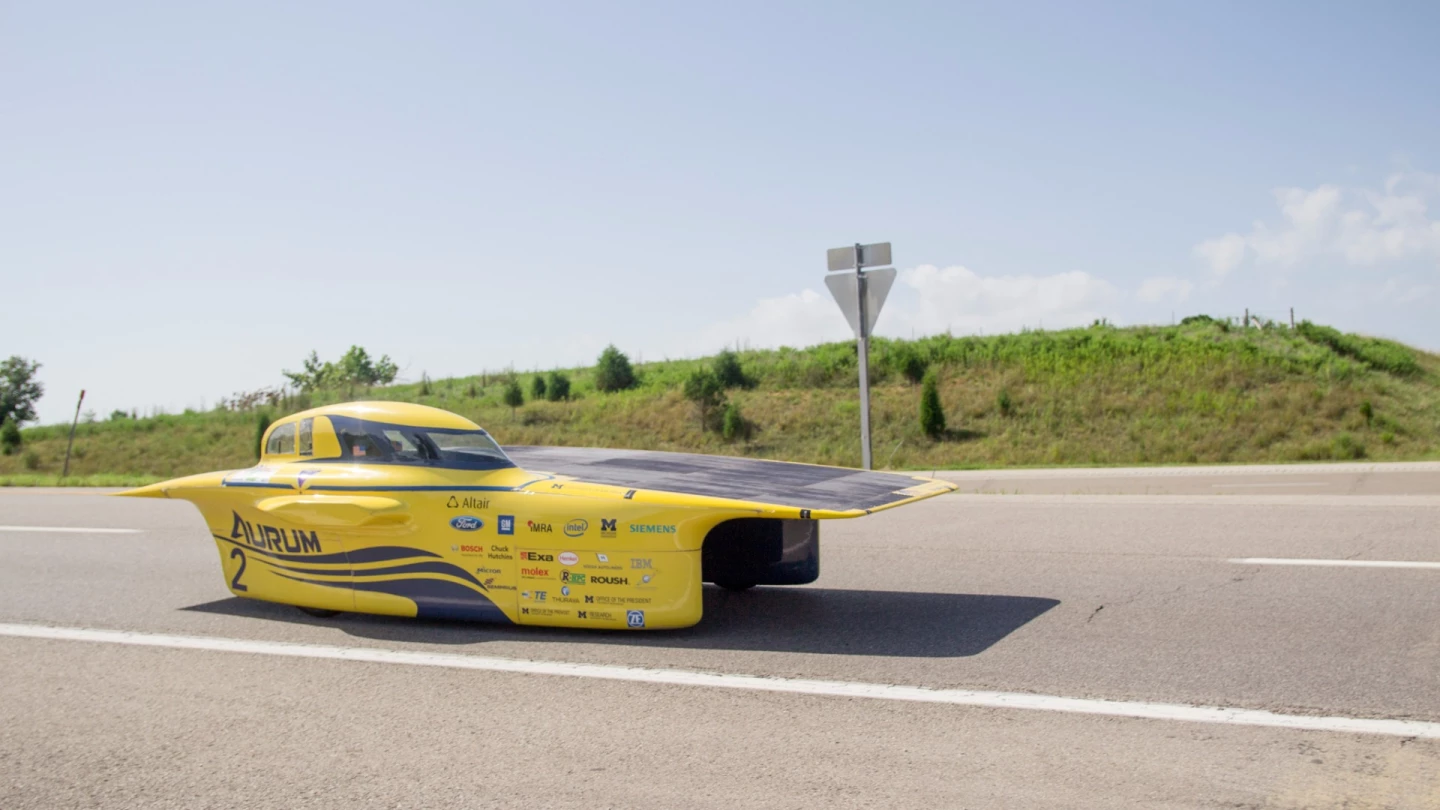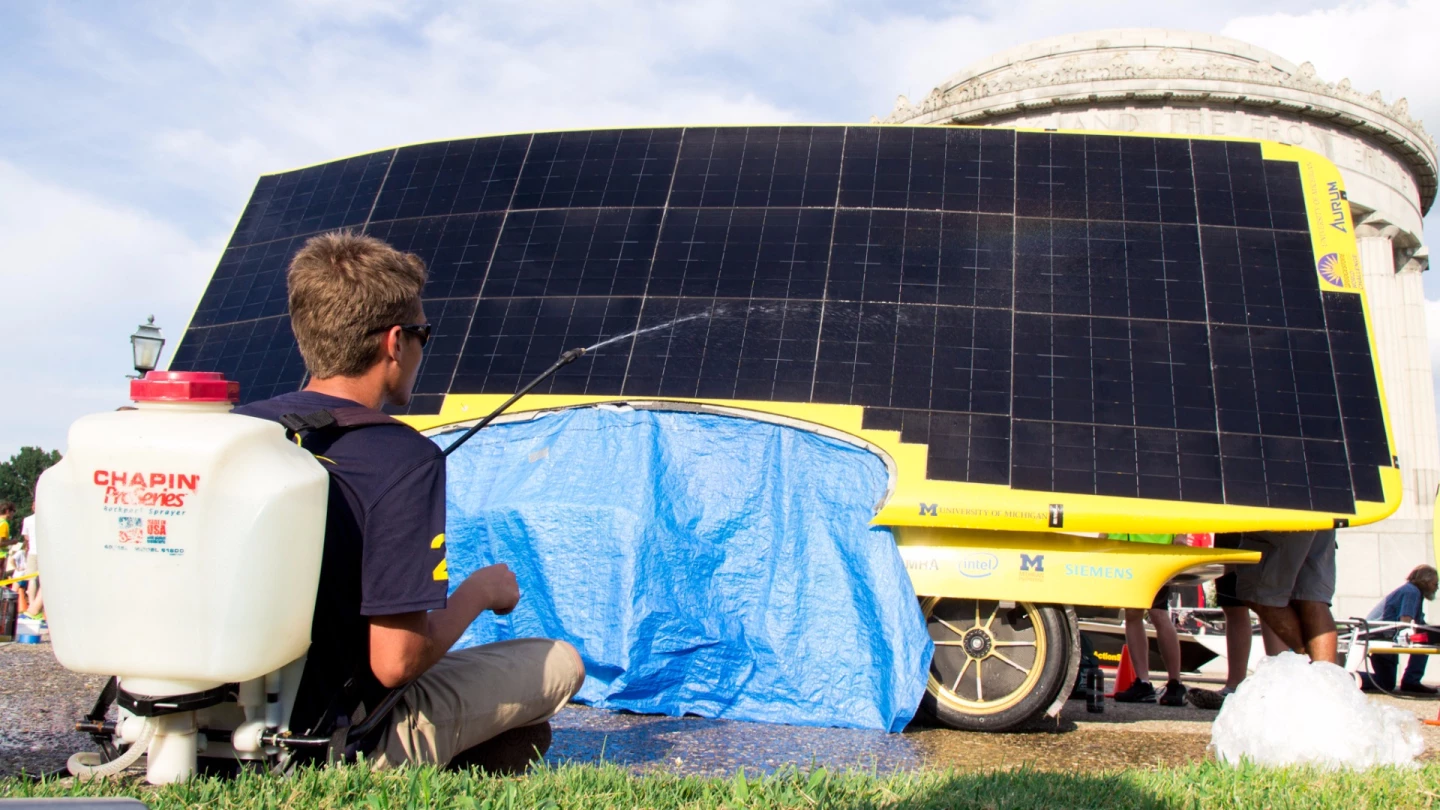Earlier this month, the University of Michigan (UM) won the American Solar Challenge, a biennial competition to design, build and drive solar-powered cars across the US. Its car, Aurum, finished a remarkable 11 hours ahead of the second placed car, so we took a look at what makes it tick.
UM has dominated the American Solar Challenge in recent years, winning every event since 2005. Aurum, though, was actually built for last year's World Solar Challenge, another biennial race in which competitors traverse 3,000 km (1,864 mi) from Darwin to Adelaide in Australia. In that, UM finished fourth out of 29 teams in its class, with a time of 34 hours, 15 minutes, 25 seconds.
Having been designed specifically for the World Solar Challenge, though, the car didn't meet the required specifications for this year's American Solar Challenge and some changes had to be made in order for it to comply with the rules.

Most significantly, the team had to increase the protective foam-filled bulge on the right-hand side of the car to provide more protection for the driver. Naturally, this would affect the car's aerodynamics, but also resulted in it being slightly larger, resulting in a seven-minute daily penalty that added 48 minutes on to the team's final time. Elsewhere, more signal lights were added, the horn was made louder and a rear strobe light that flashes when the battery hits performance limits was installed.
The car is powered by a 6-sq m (65-sq ft) solar array. Electricity produced is stored in a lithium-ion battery pack with a capacity of about 5 kWh that was designed and built by the team itself. The printed circuit boards used to control the battery, the solar array and the car's electronics were also designed and assembled by the team.
Two custom Marand hub motors propel Aurum via its rear wheels and run at around 98 percent efficiency. Indeed, the motors are built specifically for efficiency rather than power, with only a small gap between their magnets and coils to minimize power loss. Though actual power figures are not known, the UM says that the power produced is ample and that, critically, it is used sparingly.

The car has been tested up to speeds of 80 mph (129 km/h), to which the tires are rated, but was limited to 65 mph (105 km/h) for the American Solar Challenge. It weighs 600 lb (272 kg) when fully loaded with battery and driver and measures 4.5-m (14.8-ft) long and 1.8-m (5.9-ft) wide.
To keep weight to a minimum, but to provide the required levels of strength, the rest of the car is made almost entirely from carbon fiber. This, coupled with an aerodynamic design is what the UM team tells New Atlas is key to the car's performance. Indeed, Aurum's asymmetrical catamaran body is said to be more aerodynamic than any vehicle UM has ever produced.
The steering wheel is custom-designed and built, with a display and controls for the driver. It is configured to have a tight steering setup, much like a race car, so that a small rotation of the results in a relatively large response by the wheels of the car.
Custom-designed and -machined aluminum wheels are employed, with Bridgestone tires made especially for solar car racing. The tires are designed to have very low rolling resistance, allowing the car to maintain speed while minimizing energy loss.
The modified car was tested at Michigan's lower peninsula, and also along the full 3,178 km (1,975 mi) of the actual race route. The team was able to test it at Ford's Jacobs Wind Tunnel, too, by way of the carmaker's sponsorship. There, a laser scanner was used to calculate the frontal area of the Aurum and three aerodynamic tests carried out. This allowed the team to calculate the aerodynamic forces that would act on the car, and to test its own aerodynamic instruments.

The eight-day race began on July 30 at Cuyahoga Valley National Park in Ohio and finished at Wind Cave National Park in North Dakota on August 6. Aurum completed the route in a total time of 48 hours, 26 minutes and 46 seconds, ahead of its closest competitor by 11 hours, 3 minutes and 36 seconds, even with its penalties included. It was the only vehicle to complete the entire race route on entirely solar power, due to an overcast final three days.
Sources: University of Michigan, University of Michigan Solar Car Team











